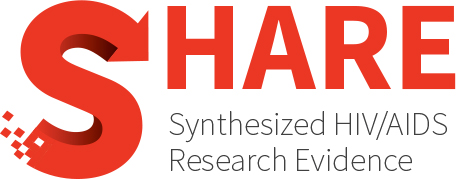Category Archives: Immigrants/Refugees/Non-status
The effectiveness and cost-effectiveness of screening for HIV in migrants in the EU/EEA: A systematic review
Migrants, defined as individuals who move from their country of origin to another, account for 40% of newly-diagnosed cases of human immunodeficiency virus (HIV) in the European Union/European Economic Area...
A systematic review of sexual and reproductive health knowledge, experiences and access to services among refugee, migrant and displaced girls and young women in Africa
Adolescent girls and young women are an overlooked group within conflict- or disaster-affected populations, and their sexual and reproductive health (SRH) needs are often neglected. Existing evidence shows that forced...
Sexual health help-seeking behavior among migrants from Sub-Saharan Africa and South East Asia living in high income countries: A systematic review
The number of migrants has increased globally. This phenomenon has contributed to increasing health problems amongst migrants in high-income countries, including vulnerability for HIV acquisition and other sexual health issues....
Tuberculosis infection and disease in people living with HIV in countries with low tuberculosis incidence
In countries with low tuberculosis (TB) incidence, TB is concentrated in vulnerable populations, including people living with the human immunodeficiency virus (PLHIV), who have a substantially greater risk of TB...
Risk perception and the influence on uptake and use of biomedical prevention interventions for HIV in sub-Saharan Africa: A systematic literature review
BACKGROUND: Risk perception has been found to be a crucial factor explaining inconsistent or non-use of HIV prevention interventions. Considerations of risk need to expand beyond risk of infection to...
Mother-to-child transmission of HIV in Australia and other high-income countries: Trends in perinatal exposure, demography and uptake of prevention strategies
Virtual elimination of mother-to-child transmission (MTCT) of human immunodeficiency virus (HIV) is a global target. A review of the literature was conducted using medical databases and health department websites to...
Sociocultural factors influencing infant-feeding choices among African immigrant women living with HIV: A synthesis of the literature
BACKGROUND AND PURPOSE: The World Health Organizations (WHO) strategy is to eliminate pediatric HIV. HIV prevention guidelines in high-income countries recommend mothers living with HIV avoid breastfeeding. Yet, breastfeeding is...
HIV risk behaviours among immigrant and ethnic minority gay and bisexual men in North America and Europe: A systematic review
HIV surveillance systems show that gay, bisexual, and other men who have sex with men (MSM) bear a disproportionate burden of HIV in North American and European countries. Within the...
